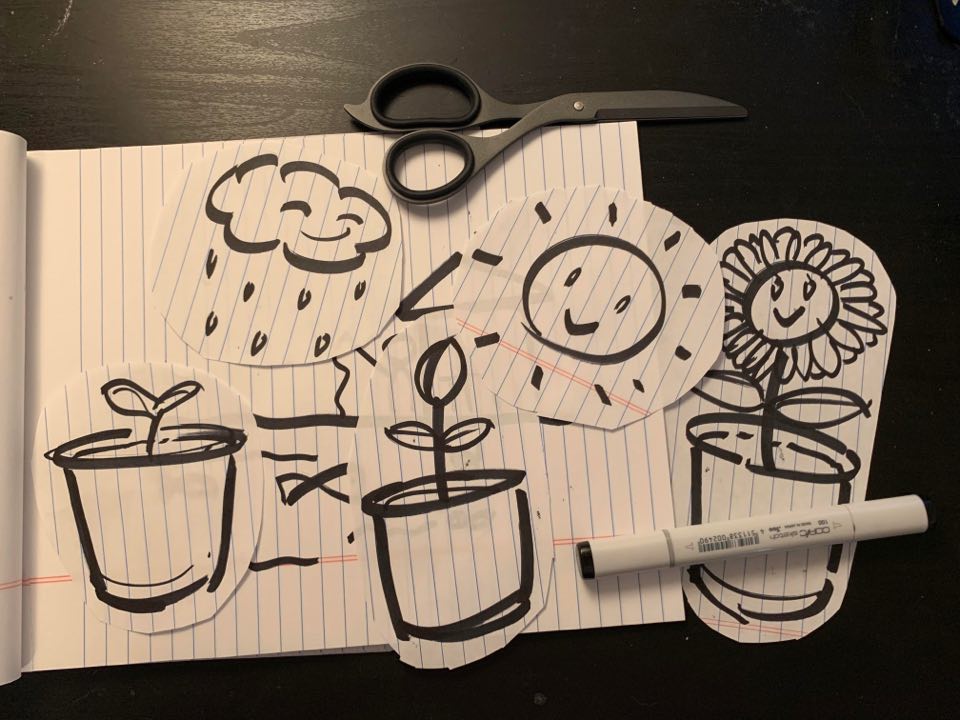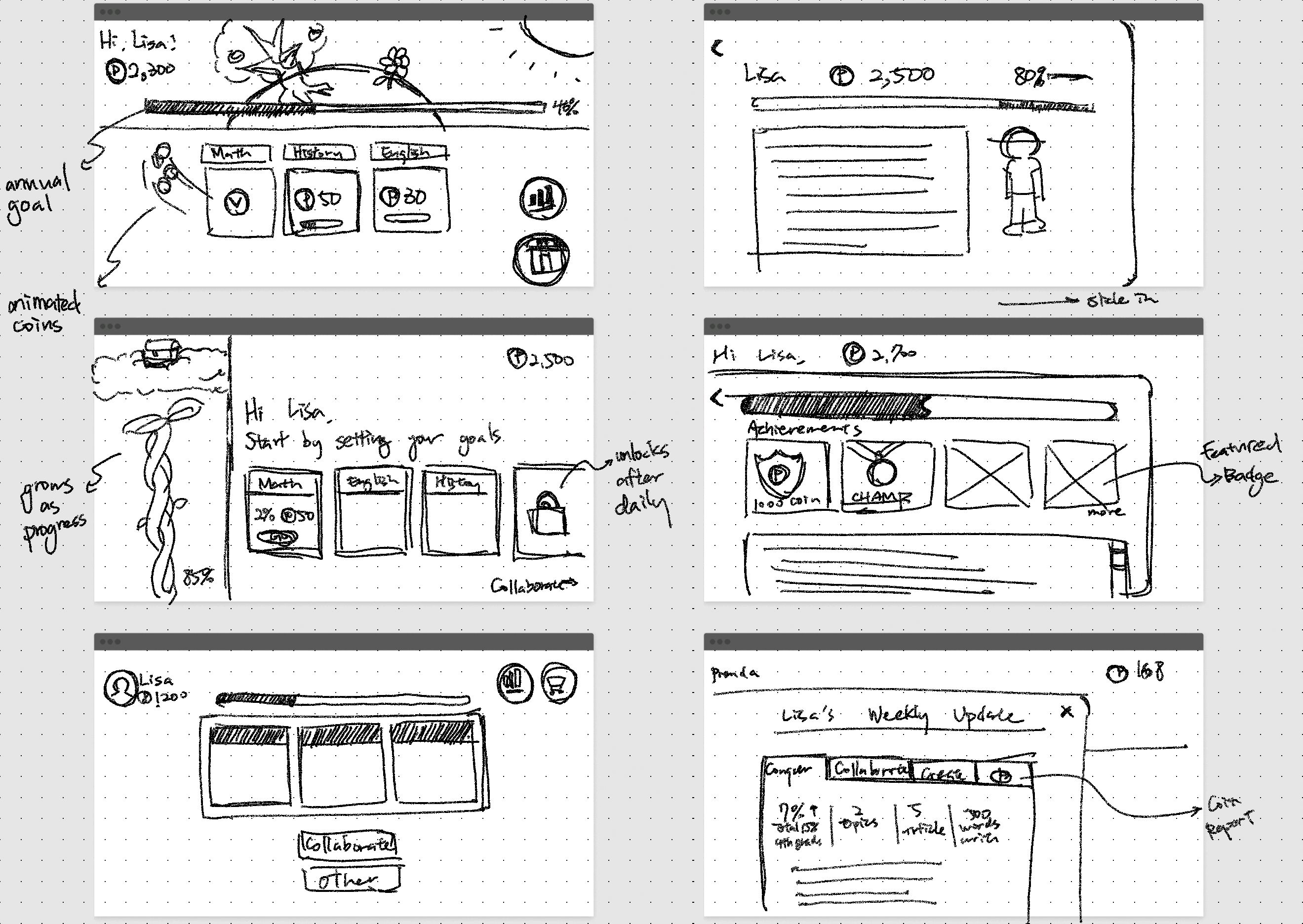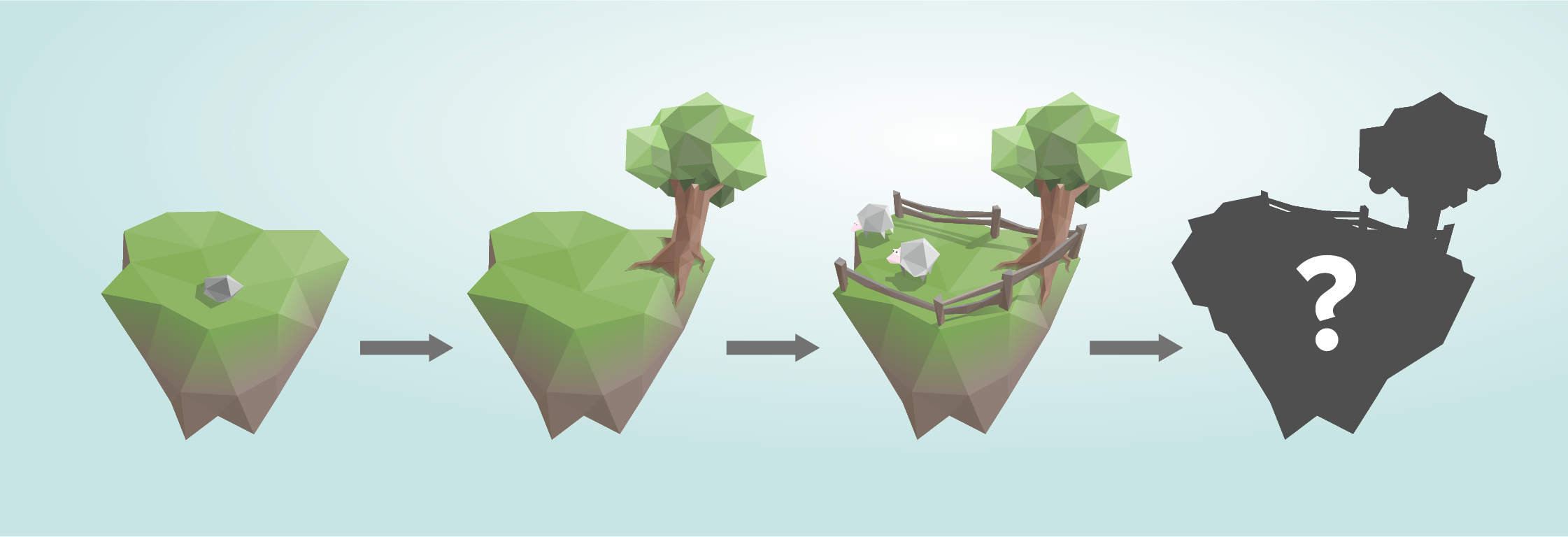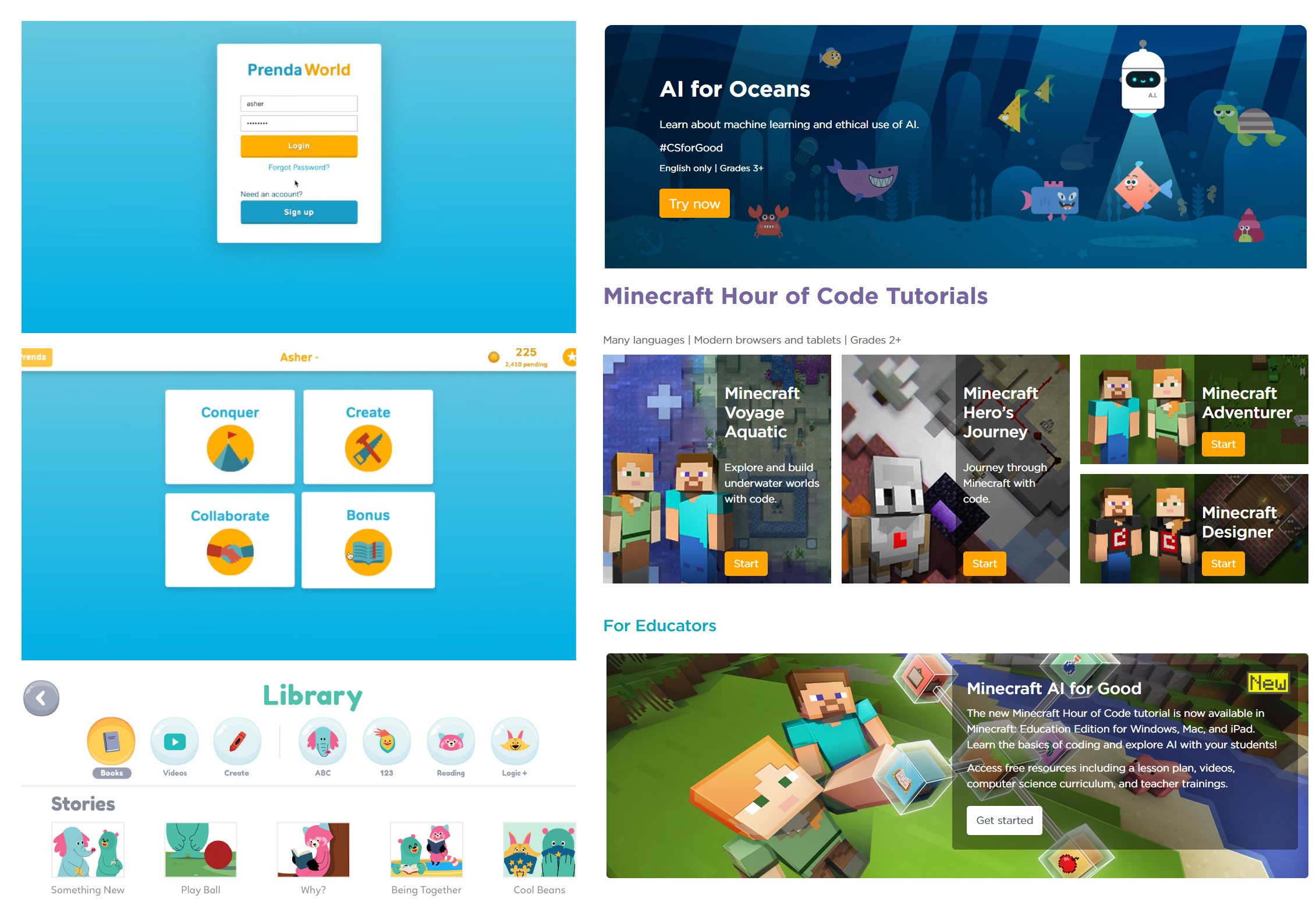We joined their morning class at Kelly's house with his students. After sitting down in their early meeting, we observed and interviewed students and instructors to learn how they used the Prenda app and how they interacted with each other. We realized that Prenda's learning model wasn't only about the app but also the interaction between students and the instructor.
Students spent most of their time in Conquer Mode:
Students set their daily goals then visit external learning platforms in new tabs. After finishing the courses, they return to the app and manually record their progress. After each goal completion, students earn coins that can be saved to purchase rewards such as snacks, ping pong time, and videogame time.
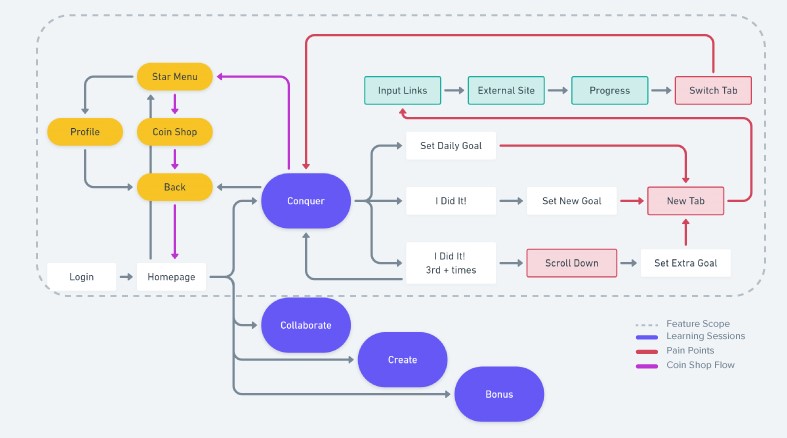
We carefully examined Prenda's app and identified several pain points that were also observed during the interview:
- (00:08) Conquer mode was clustered with different goals that made tracking the overall daily progress difficult.
- (00:12) Switching between new tabs made it hard to navigate the browsers on their small Chromebook screens.
- Returning to homepage was required after every mode although it doesn't provide any information.
- Coin shop returned students to the homepage regardless of where they were.

With the empathy map and affinity map we were able to categorize students’ incentives as the following:
- Achievements: Kids loved to share their progress with others. High-fives and encouragement from the instructor really kept them going.
- Engagement: Students got lost in certain gamified platforms such as the Minecraft coding game. They would forget the daily tasks and keep coding until the instructor reminded them.
- Progression: The app awarded them with coins, which could be exchanged for popcorn, park visit, or videogame time. Some students just hoarded coins and enjoyed exhibiting the wealth they’ve built.
- Support: Students don’t compare their academic success and advance at their own pace. The atmosphere was fairly supportive with everyone helping each other and collaborating on group projects.
The findings that aligned with our initial goal during our research phase were the followings:
- Rugged user flow complicated simple tasks and didn't match students' learning routines.
- Progression tracking was lacking, leaving students unaware of their past achievements. Also some students would "skip" the lessons to earn rewards.
- Sense of achievement engaged and motivated students to take on challenging subjects and move beyond daily goals.
%400.3x.jpg)
